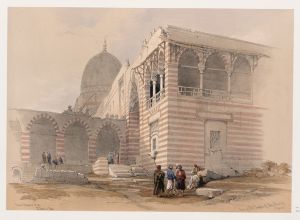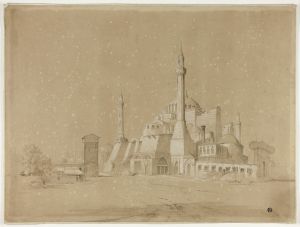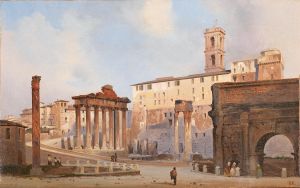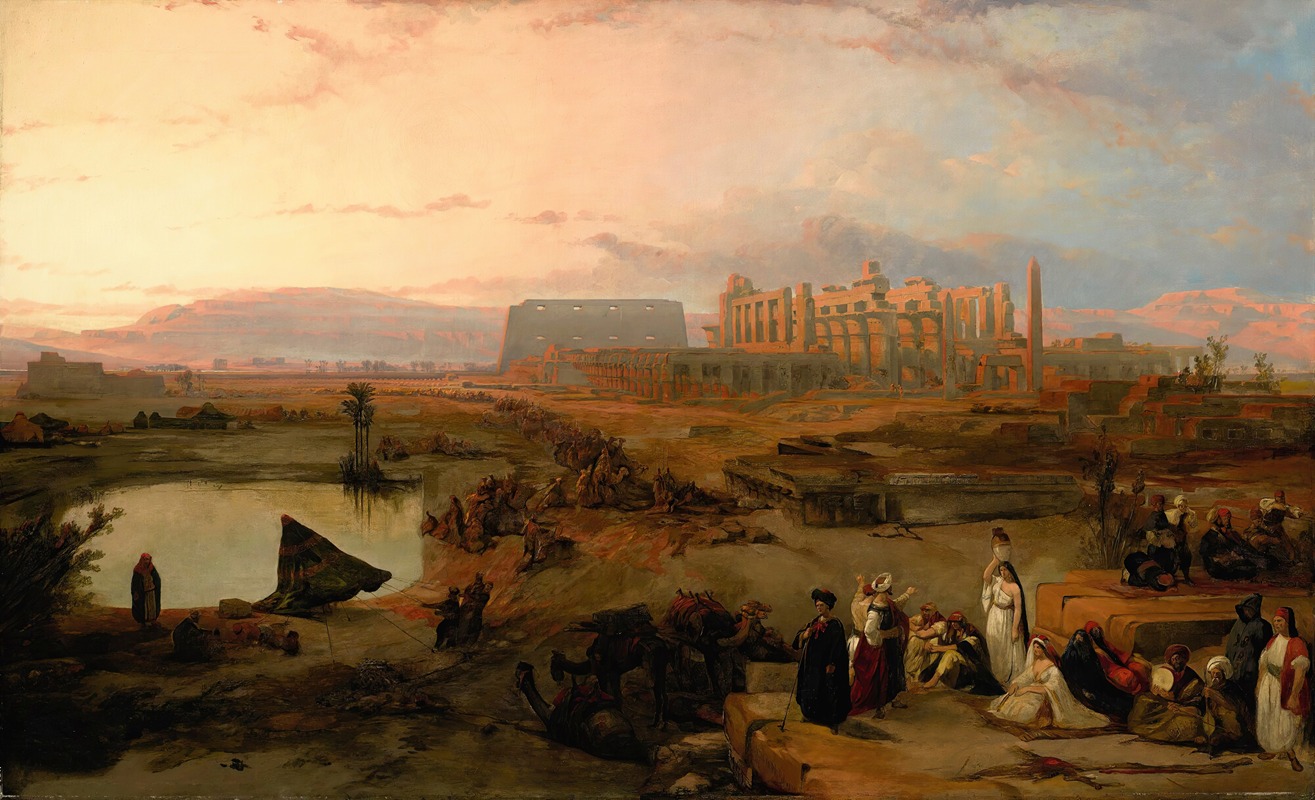
Ruins of the great temple at Karnak, sunset
A hand-painted replica of David Roberts’s masterpiece Ruins of the great temple at Karnak, sunset, meticulously crafted by professional artists to capture the true essence of the original. Each piece is created with museum-quality canvas and rare mineral pigments, carefully painted by experienced artists with delicate brushstrokes and rich, layered colors to perfectly recreate the texture of the original artwork. Unlike machine-printed reproductions, this hand-painted version brings the painting to life, infused with the artist’s emotions and skill in every stroke. Whether for personal collection or home decoration, it instantly elevates the artistic atmosphere of any space.
David Roberts was a Scottish painter known for his detailed and historically significant depictions of architectural and archaeological sites. One of his notable works is "Ruins of the Great Temple at Karnak, Sunset." This painting is part of his extensive series of lithographs and paintings that document his travels in the Middle East and North Africa during the 19th century.
Roberts embarked on his journey to the region in 1838, traveling through Egypt, the Holy Land, and parts of the Arabian Peninsula. His travels were meticulously documented through sketches and notes, which he later used to create a series of lithographs. These works were published between 1842 and 1849 in a collection titled "The Holy Land, Syria, Idumea, Arabia, Egypt, and Nubia." The collection was highly acclaimed for its artistic merit and its contribution to the Western understanding of these regions.
The Great Temple at Karnak, located near Luxor in Egypt, is one of the largest and most significant religious complexes from ancient Egypt. It was primarily dedicated to the god Amun-Ra and served as a major center of worship and political power. The temple complex was constructed over several centuries, beginning in the Middle Kingdom and continuing through the Ptolemaic period. It features a vast array of pylons, obelisks, and hypostyle halls, showcasing the architectural grandeur of ancient Egyptian civilization.
In "Ruins of the Great Temple at Karnak, Sunset," Roberts captures the temple's majestic ruins bathed in the warm glow of the setting sun. His use of light and shadow highlights the intricate details of the temple's columns and hieroglyphs, emphasizing the grandeur and mystery of the ancient site. Roberts' work is characterized by its precision and attention to detail, qualities that are evident in this painting.
Roberts' depictions of Egyptian sites were among the first to be widely disseminated in Europe, providing many people with their first visual impressions of these ancient wonders. His work played a significant role in the 19th-century fascination with Egyptology and contributed to the burgeoning field of archaeological study. The accuracy and artistry of Roberts' paintings and lithographs have made them valuable historical records, offering insights into the condition and appearance of these sites during the 19th century.
The painting "Ruins of the Great Temple at Karnak, Sunset" is a testament to Roberts' skill as an artist and his dedication to capturing the essence of the places he visited. His work continues to be appreciated for its historical significance and its ability to transport viewers to the ancient world. Roberts' legacy endures through his contributions to art and the documentation of cultural heritage, making his works an important part of both art history and the study of ancient civilizations.





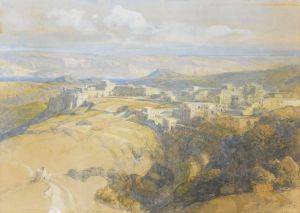
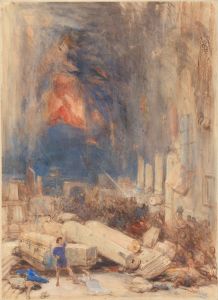
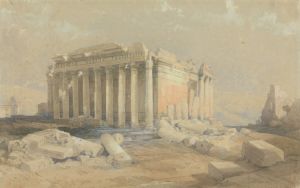
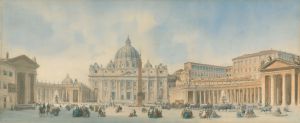
![Colossus in front of Temple of Wady Saboua [Wadi al-Sabua], Nubia.](/imgs/217471/s/david-roberts-colossus-in-front-of-temple-of-wady-saboua-wadi-alsabua-nubia-503a97c9.jpg)
![Karnac [Karnak]. Nov. 29th, 1838](/imgs/217503/s/david-roberts-karnac-karnak-nov-29th-1838-5a10b435.jpg)
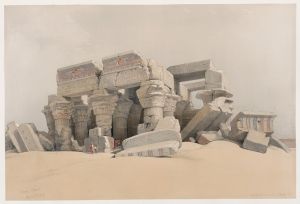
![Medint [sic] Abou [Medinet Habu], Thebes. Dec. 8th, 1838.](/imgs/217511/s/david-roberts-medint-sic-abou-medinet-habu-thebes-dec-8th-1838-4bc38982.jpg)
